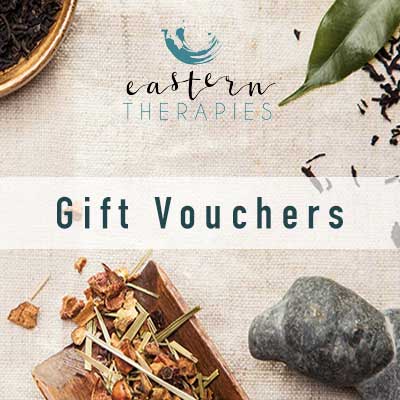Frequently Asked Questions
Before you arrive at Eastern Therapies you may have a few questions about your treatment. Here are a few of our most frequently asked questions. If you have other questions, call our office at 0400 331 321 before your appointment.
Acupuncture FAQ
Is it safe? What qualifications do you have?
Australian acupuncturists have very strict guidelines. In order to practice acupuncture you must be qualified with a minimum 4 year degree and be registered with AHPRA and a national professional association. Every year we are required to do additional learning to maintain registration.
All needles are single use to prevent cross infection and we adhere to strict OH&S guidelines at Eastern Therapies. When done by one of our trained professionals acupuncture is extremely safe, and there is an extremely low chance of side effects.
Does acupuncture hurt?
Generally, the patient will not feel anything. The Traditional Japanese Acupuncture practised at eastern Therapies uses needles thinner than most other acupuncturists, and comparable to the diameter of a hair. Some patients feel slight discomfort on the insertion of the needle, but this does not last.
No pain, does not mean there is no sensation.
Some common responses include tingling, aching, heaviness, warmth and feelings of electricity.
How many sessions do I have to come for treatment?
The number of treatments needed will vary for each person, and is dependent on the type of condition and the length of time you’ve had the condition ( acute or chronic ) and the person’s constitution.
Generally speaking, acute conditions require 3 – 6 treatments, whilst some patients need to come for a year to create meaningful change. We suggest that patients coming for fertility issues come for at least 3 cycles in order to regulate hormonal balance.
What is the difference between Japanese and Chinese Acupuncture?
Whilst every acupuncturist you visit will be unique, Japanese acupuncture has come to be identified by a number of key elements.
These include:
More gentle – Japanese acupuncture generally utilises smaller gauge needles and inserts them at a shallower depth.
Palpation – a large focus is placed on palpating (touch) before treating. A practice that developed from the blind acupuncturists of Japan. Touch is used to diagnose and accurately insert needles
Moxa – Moxabustion or the ‘mugwort plant’ is used in many forms by Japanese acupuncturists. Its warming nature is used to improve circulation and strengthen treatment results.
What is the difference between dry needling and acupuncture?
Dry needling can be seen as a subcatagory of acupuncture. Simply put, dry needling involves needling at muscles trigger points with strong stimulation. Brought into popularity in the late nineties by Janet Travell, dry needling is now practiced by many physical therapists around the world. In order to learn and practice dry needling in Australia you must attend a 2 weekend course. Therapists who practice dry needling can only needle the problem area. They have no ability to diagnose for complex problems within the acupuncture framework.
Acupuncture is over 3000 years old, and relies on careful palpation and knowledge of both Western anatomy and the channel networks, organ pathophysiology and connections to locate acupuncture points, which lie on meridians and help the flow of qi and blood to help create balance in the body. Acupuncturists require a minimum 4 year Bachelors Degree.
Do you recommend any Chinese herb after acupuncture?
The combination of Chinese herbs and acupuncture produces very effective outcomes for many conditions. Herbs will only be prescribed if they are deemed necessary on a case by case basis. Our qualified practitioners will talk with you if they think you could benefit from taking them.
*Chinese Herbs are provided in tablets or granule form and are taken with water.
Can I see some testimonials?
The Chinese medicine profession registered by the government body Australian Health Practitioner Regulation Agency (AHPRA). GP s, medical specialists, dentists etc all conform with the same advertising standards set by AHPRA*.
We hear success stories every day in our clinic but we cannot get testimonials from patients. We are allowed to publish case studies/ success stories which you can access from here: Case Studies
*Section 133 of the National Law states “A person must not advertise a regulated health service, or a business that provides a regulated health service, in a way that uses testimonials or purported testimonials about the service or business”
Laser Acupuncture FAQ
How long will it take to feel the benefits of my treatment?
How many treatments sessions do I need?
How many treatments sessions do I need?
What happens during the treatment?
Tender areas around the site of pain are found by examining the painful area during each treatment. The laser probe is applied to the skin over tender areas which are treated for approximately 30 seconds per point.
What happens when you apply low level laser therapy?
How long does each session take?
How often should I have low level laser therapy?
Will I feel any pain from low level laser therapy?
Very few of our patients feel pain at all, though there are others who feel tired, dizzy or nauseated for several hours after their treatment. They also feel more pain on the affected area for a few hours or even a day or two after treatment. However, few patients need to take medication for this pain. To minimise the side effects of low level laser therapy, it best to drink a glass of water before and after treatment.
What can low level laser therapy treat?
- Neck and back pain
- Bladder Prolapse
- Knee pain
- Arthritic Pain
- Tendonitis
- Bursitis
- Sciatica Pain
- Frozen shoulder
- Carpal Tunnel and RSI
- Rotator Cuff injury
- Lymphoedema
- Fibromyalgia
- Migraine
- Leg, foot and joint pain
- Neuralgia (including Trigeminal)
- Facial Rejuvenation
- Acne

